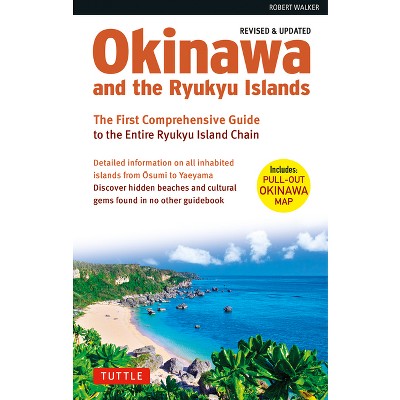Sponsored

The Islands and the Stars - by Subodhana Wijeyeratne
Pre-order
Sponsored
About this item
Highlights
- The Japan Aerospace Exploration Agency (JAXA) is among the six largest national space agencies in the world, along with China's CNSA, US's NASA, and Russia's Roscosmos.
- About the Author: Subodhana Wijeyeratne is Assistant Professor of History at Purdue University.
- 352 Pages
- History, Asia
Description
About the Book
"The Japan Aerospace Exploration Agency (JAXA) is among the six largest national space agencies in the world, along with China's CNSA, US's NASA, and Russia's Roscosmos. JAXA's budget is more than $1 billion USD - bigger than France or Germany individually, and more than that of Italy, India, Canada, and the UK combined. And yet, Japan's significant contributions have largely been absent in the history of space exploration, and space exploration largely absent in the history of technology in Japan. The Island and the Stars corrects this conspicuous oversight. Through meticulous archival research in Japanese and anglophone archives, Subodhana Wijeyeratne examines the history of Japan's space exploration efforts over nearly a century. Wijeyeratne traces the evolution of Japan's space program from its early origins in the 1920s, through the postwar period of rapid technological innovation, to the consolidation of its various institutional elements into JAXA in 2003. He situates Japan's space programs within the broader history of the country's postwar recovery, economic growth, and cultural identity, while also considering their place within global trends in space exploration. Through this narrative, Wijeyeratne not only illuminates Japan's centrality to the global history of science and technology, but also offers insights into the future of global space exploration, emphasizing the importance of diverse voices and perspectives in the quest to understand our place in the cosmos"--Book Synopsis
The Japan Aerospace Exploration Agency (JAXA) is among the six largest national space agencies in the world, along with China's CNSA, US's NASA, and Russia's Roscosmos. JAXA's budget is more than $1 billion USD--bigger than France or Germany individually, and more than that of Italy, India, Canada, and the UK combined. And yet, Japan's significant contributions have largely been absent in the history of space exploration, and space exploration largely absent in the history of technology in Japan. The Islands and the Stars corrects this conspicuous oversight. Through meticulous archival research in Japanese and anglophone archives, Subodhana Wijeyeratne examines the history of Japan's space exploration efforts over nearly a century.
Wijeyeratne traces the evolution of Japan's space program from its early origins in the 1920s, through the postwar period of rapid technological innovation, to the consolidation of its various institutional elements into JAXA in 2003. He situates Japan's space programs within the broader history of the country's postwar recovery, economic growth, and cultural identity, while also considering their place within global trends in space exploration. Through this narrative, Wijeyeratne not only illuminates Japan's centrality to the global history of science and technology, but also offers insights into the future of global space exploration, emphasizing the importance of diverse voices and perspectives in the quest to understand our place in the cosmos.
Review Quotes
"Somewhat surprisingly, there has been no comprehensive history of the Japanese civilian space program in English--until now. This book introduces the key institutions and actors that have motivated the development of Japan's civilian space program over the past one hundred years, illuminating both the triumphs and the tensions that shaped one of Japan's most significant technological endeavors." --Kate McDonald, University of California, Santa Barbara
"Subodhana Wijeyeratne has produced a landmark study on the Japanese space program that will become the standard work on the subject. Drawing on a wealth of archival and published Japanese sources, he situates the creation of the space program in broader debates, trends, and turning points in the history of modern Japan. In that sense, this is book is essential reading for historians and public alike interested in modern Japan's engagement with science and technology in the 20th century." --Asif Siddiqi, Fordham University
About the Author
Subodhana Wijeyeratne is Assistant Professor of History at Purdue University.Shipping details
Return details
Trending Non-Fiction











